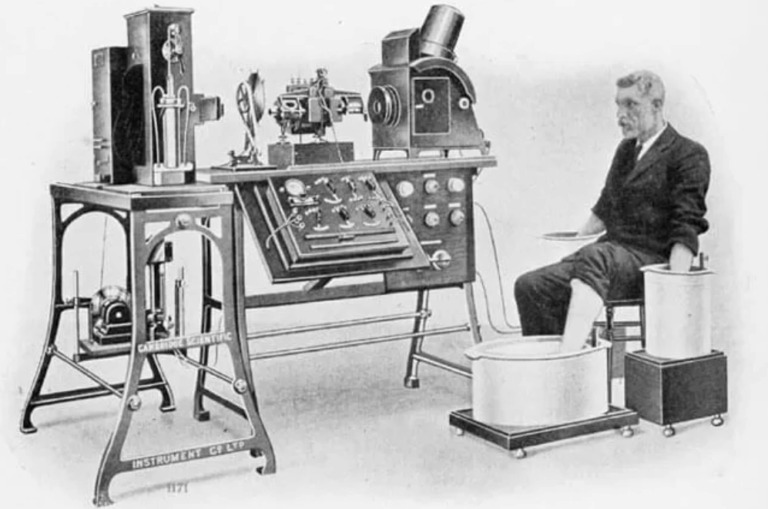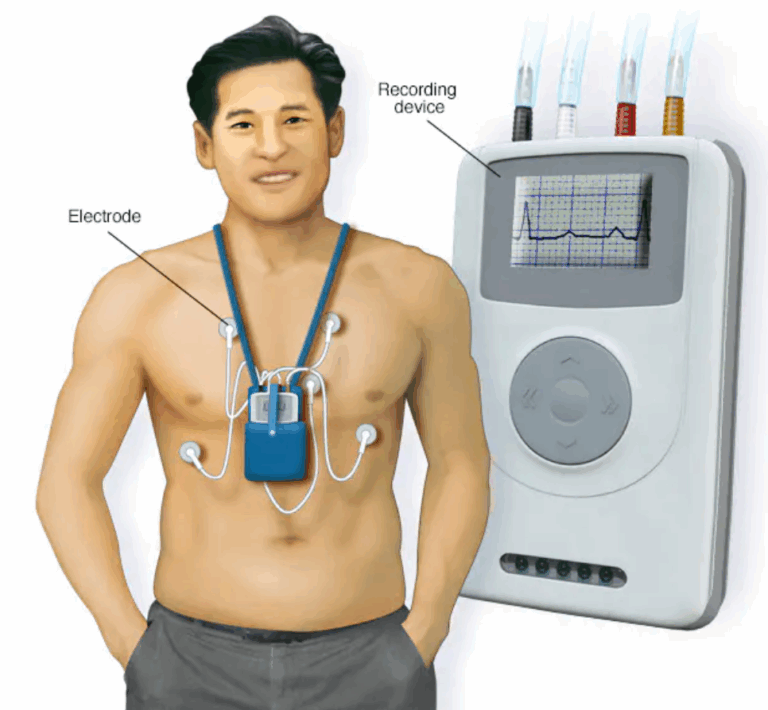The Medical Futurist – Read More
ECG (or, sometimes, EKG) is short for electrocardiogram, a device that records and provides a graphical representation of the electric signals originating from the human heart. These devices have existed since the early 20th century and have become standard equipment in healthcare settings. In the digital health age, their availability has broken the confines of the latter settings and become available to every patient in compact form factors. In this article, we take the pulse on the evolution of the ECG and what lies ahead.
ECGs through the ages
Precursors to the ECG can be traced back to the late 1800s, when scientists identified that the human heart produces electrical currents. The first attempts to measure these signals, and thereby the heart’s activity, included the capillary electrometer, but these were not sensitive enough.
It was Dutch Nobelist Willem Einthoven who, in the early 1900s, designed a reliable way to measure the heart’s electric waves and coined the term ‘electrocardiogram’. He even identified features of these waves that are still employed today for diagnostic purposes: P wave, QRS complex, and T wave. The machine he devised to take these measurements weighed over 600 pounds and required 5 people to operate.

While Einthoven’s ECG concepts persisted, his ECG device did not and was, thankfully, improved. Over the 20th century, ECGs slimmed down and required less manpower, with modern ones weighing about 8 pounds and being operated by a single person. The accessories needed to operate an ECG unit – from cables to cables to leadwires – have improved to become more durable and reliable.
Most modern ECGs include electrodes that detect the heart’s electrical signals, leads that connect electrodes to the ECG equipment and the main ECG machine that displays and prints the electrical activity. In clinical settings, the 12-lead ECG machine is the standard. It uses 10 physical electrodes that are attached to the patient – six on the chest and four on the limbs – to measure their heart activity from 12 different angles. This will produce 12 individual graphs on a piece of ECG paper.
While there are ECGs that utilise different numbers of electrodes, such as 3-electrode systems or 5-electrode systems, the 12-lead ECG provides a more comprehensive picture of the heart’s electrical activity. By analysing its output, clinicians can perform detailed diagnosis and localisation of cardiac issues. Single-lead ECGs that are common in personal monitors such as smartwatches might be more adequate for screening, while a more definite picture can be obtained from 12-lead ECGs under the supervision of clinicians.
Holter monitors: the precursor to wearable ECG monitors
In the digital health age, the ability to monitor and analyse ECGs has become possible outside of clinical settings. Now, patients can take an ECG reading from devices that fit their wrists at home. But before these minaturised versions were even a possibility, the Holter monitor provided a glimpse at today’s portable and wearable ECGs.
This portable device, featuring at least two electrodes, enables the continuous monitoring of heart activity, usually fore 1 to 2 days. It was the product of the work of Norman Holter and Bruce Del Mar in the mid-1900s, with clinical use starting in the early 1960s. It is still used in practice in cases where a traditional ECG reading doesn’t yield enough information. The Holter monitor may be able to detect irregular signals that were not caught by the ECG.

If no irregular heartbeat is detected by during a standard Holter monitoring, an event monitor might be needed. It is similar to the Holter monitor but is able to record signals for longer periods, over the course of weeks.
The Holter monitor and event monitor were early indications of wearable ECGs and personal ECG monitors.
Innovation at heart: ECG monitoring in the digital health era
The next stage of the evolution of ECGs, that of compact monitors, was spearheaded by AliveCor. The company’s first device, the AliveCor Heart Monitor, was released in 2011. It was an iPhone case that doubled as a single-lead ECG. A notable milestone is that it received FDA approval for medical use in 2012, and was available for purchase by doctors only.
It should be noted that such first-generation ECG devices relied on the readings being analysed by medical professionals. In 2014, AliveCor’s algorithm received FDA clearance for its algorithm to detect atrial fibrillation (AFib), a sign of stroke risk. The company received another clearance in 2015 for its device’s companion software to interpret the readings automatically and notify of abnormal readings. These developments truly marked the beginning of more accessible ECG measurements and analyses.
This led to companies experimenting with other form factors, such as the pocketable, standalone AliveCor Kardia Mobile and more versatile monitors like the Prizma G2 and the Viatom CheckMe Pro. The latter not only take ECG readings but also temperature, blood oxygen level, heart rate and more. Such experimentations in integrating ECGs in other devices hint at the design challenges of translating a complex monitoring tool into a portable, yet user-friendly device.
With the Apple Watch Series 4 receiving FDA clearance in 2018, a new milestone for wearable ECGs was achieved. This marked the first mass-market ECG device with medical clearance. It was the start of large-scale adoption of personal ECG monitors, and other smartwatches followed suit, like the Withings ScanWatch. The latter received FDA clearance for AFib detection in 2021.
Integrating ECGs in smartwatches might have cracked the code for the coupling of such monitors in non-standalone devices. But more lies ahead in the evolution of ECGs.
A pulse on the future of ECGs
For the ECG, its evolution across the 20th century was focused on making the device smaller and more practical for use in clinical settings. In the 21st century, we can expect the focus to be on smaller and smarter monitors.
In a clinical setting, ECGs will be coupled with other devices such as blood pressure monitors. Products such as the Withings BPM Core and the Viatom Armfit+ have already brought this concept to life. Such multimodal cardiology diagnostics from a single device makes sense from a practical point of view, and we are likely to see their adoption in future medical practice.
Devices like the Holter monitor will adopt more compact designs while integrating more leads, or the equivalent of 12 leads with flexible textiles and sensor arrays, for a better clinical picture of the heart. This will be aided by artificial intelligence (AI) analyses, as the models become more proficient at interpreting ECG readings. They might go beyond spotting AFib to forecasting arrhythmias before they occur.
As ECGs minaturise further, they will become more commonplace in devices we wear, such as smartwatches. Users will also have the option for continuous monitoring, instead of the “on-demand” feature that is currently present. This could lead to population-level AFib and arrhythmias detection and help people take preventative measures.
However, there are still some limitations and risks that must be considered. The risk of false positives can cause unnecessary anxiety among patients and burden healthcare systems with a surplus of cardiology visits. The reliance on high-tech devices might bring about an equity issue, with access to such options being limited to high-income countries. Such issues should be taken into consideration by policymakers and healthcare organisations as we move along the ECG evolution timeline.
Written by Dr. Bertalan Meskó & Dr. Pranavsingh Dhunnoo
The post The Evolution Of Portable ECGs appeared first on The Medical Futurist.





